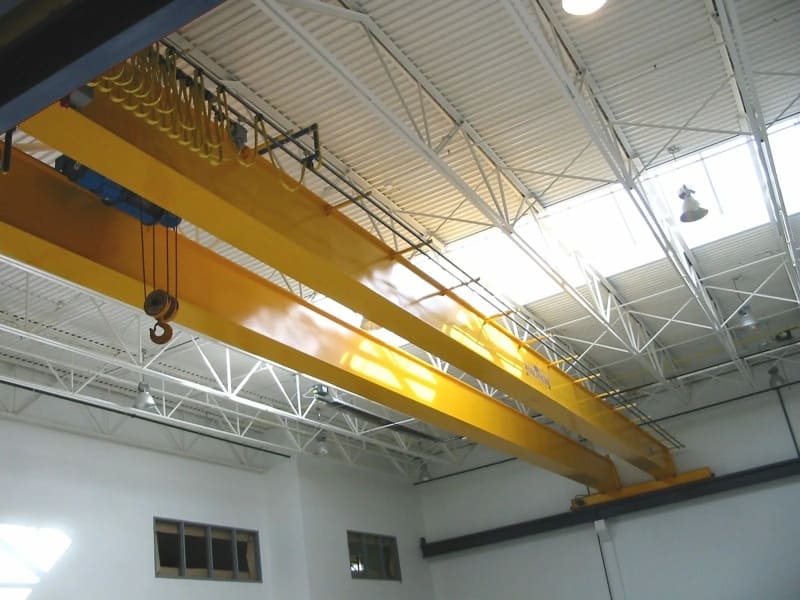A double girder bridge crane is one of the most important lifting solutions used in modern material handling. Unlike single girder cranes, this type of crane adopts two parallel girders supported by end trucks or carriages on each side. In most cases, the double girder bridge crane is designed in a top running configuration, with the hoist trolley or open winch trolley traveling on rails installed above the girders. This design increases hook height and lifting efficiency, making it the preferred choice for facilities that demand reliable performance under challenging conditions.
Design and Performance Features
The dual beam design provides greater strength and stability, allowing the crane to handle heavier lifting capacities and longer spans. For this reason, the heavy duty overhead crane is most often built as a double girder model. The placement of the hoist between or on top of the girders makes better use of vertical space, enabling operators to achieve maximum lifting height. Since the components, including the hoist trolley and open winch trolley, are more complex and robust, the cost of a double girder bridge crane is typically higher than that of a single girder crane. However, the long-term benefits in performance and durability justify the investment for demanding applications.
Types of Double Girder Overhead Cranes
There are several types of industrial overhead crane designs that fall under the double girder category. Popular models include the QD and LH cranes, which are widely used for general heavy-duty lifting. European-style cranes such as the QDX and NLH are also available, offering a more compact structure, lighter dead weight, and advanced features such as frequency conversion and dual-speed lifting. These innovations make the European industrial overhead crane smoother, more energy-efficient, and aesthetically refined, appealing to customers who value both function and design.
Top Running vs. Under Running Configurations
The double girder bridge crane can be configured as either a top running or under running system. Top running designs provide the greatest hook height and overhead room, making them ideal for facilities where maximizing lifting space is critical. Under running double girder cranes, on the other hand, are suspended from the building’s ceiling structure and are useful for areas with limited headroom. However, under running models are generally more complex and expensive, so in most applications, the heavy duty overhead crane is built as a top running system.
Technical Features and Advantages
Several advanced features further enhance the reliability of the double girder crane system. The main beam often adopts a truss structure, which combines light weight with high load capacity and strong wind resistance. Pins and bolt links are designed at 12-meter intervals, simplifying transport and assembly. In addition, the crane can be equipped with Siemens or Schneider electric parts as standard, ensuring reliability in continuous operation. Optional features such as frequency conversion, PLC safety monitoring, and even a diesel generator set can be added to customize the system. These features make the industrial overhead crane not only powerful but also adaptable to unique working conditions.
Applications in Heavy Industry
The heavy duty overhead crane is the first choice for workshops, steel plants, shipyards, and large-scale construction projects where extremely heavy loads must be moved efficiently and safely. With a wide range of crane spans, hook heights, and traveling speeds, double girder cranes can be configured to match the specific needs of heavy industries. Whether equipped with a hoist trolley system or an open winch trolley system, the double girder bridge crane provides unmatched performance for lifting and transporting massive loads.
The double girder bridge crane is the backbone of many industrial lifting operations. With its robust structure, advanced technology, and superior lifting capacity, it stands as the ideal industrial overhead crane for facilities that require reliability, safety, and high efficiency. As a heavy duty overhead crane, it outperforms single girder designs and offers long-term value, making it the best solution for demanding material handling applications.








